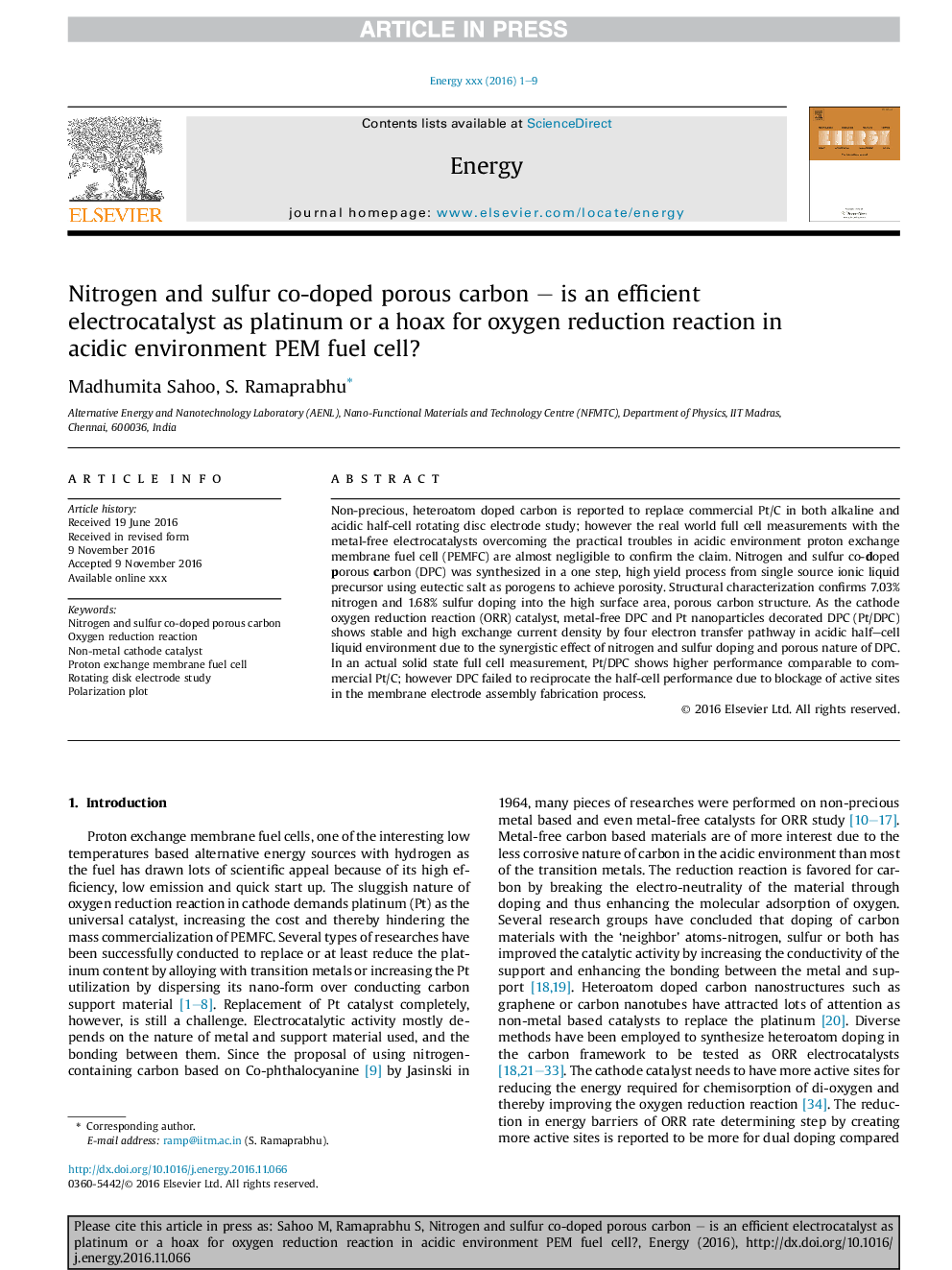| Article ID | Journal | Published Year | Pages | File Type |
|---|---|---|---|---|
| 5476947 | Energy | 2017 | 9 Pages |
Abstract
Non-precious, heteroatom doped carbon is reported to replace commercial Pt/C in both alkaline and acidic half-cell rotating disc electrode study; however the real world full cell measurements with the metal-free electrocatalysts overcoming the practical troubles in acidic environment proton exchange membrane fuel cell (PEMFC) are almost negligible to confirm the claim. Nitrogen and sulfur co-doped porous carbon (DPC) was synthesized in a one step, high yield process from single source ionic liquid precursor using eutectic salt as porogens to achieve porosity. Structural characterization confirms 7.03% nitrogen and 1.68% sulfur doping into the high surface area, porous carbon structure. As the cathode oxygen reduction reaction (ORR) catalyst, metal-free DPC and Pt nanoparticles decorated DPC (Pt/DPC) shows stable and high exchange current density by four electron transfer pathway in acidic half-cell liquid environment due to the synergistic effect of nitrogen and sulfur doping and porous nature of DPC. In an actual solid state full cell measurement, Pt/DPC shows higher performance comparable to commercial Pt/C; however DPC failed to reciprocate the half-cell performance due to blockage of active sites in the membrane electrode assembly fabrication process.
Related Topics
Physical Sciences and Engineering
Energy
Energy (General)
Authors
Madhumita Sahoo, S. Ramaprabhu,
